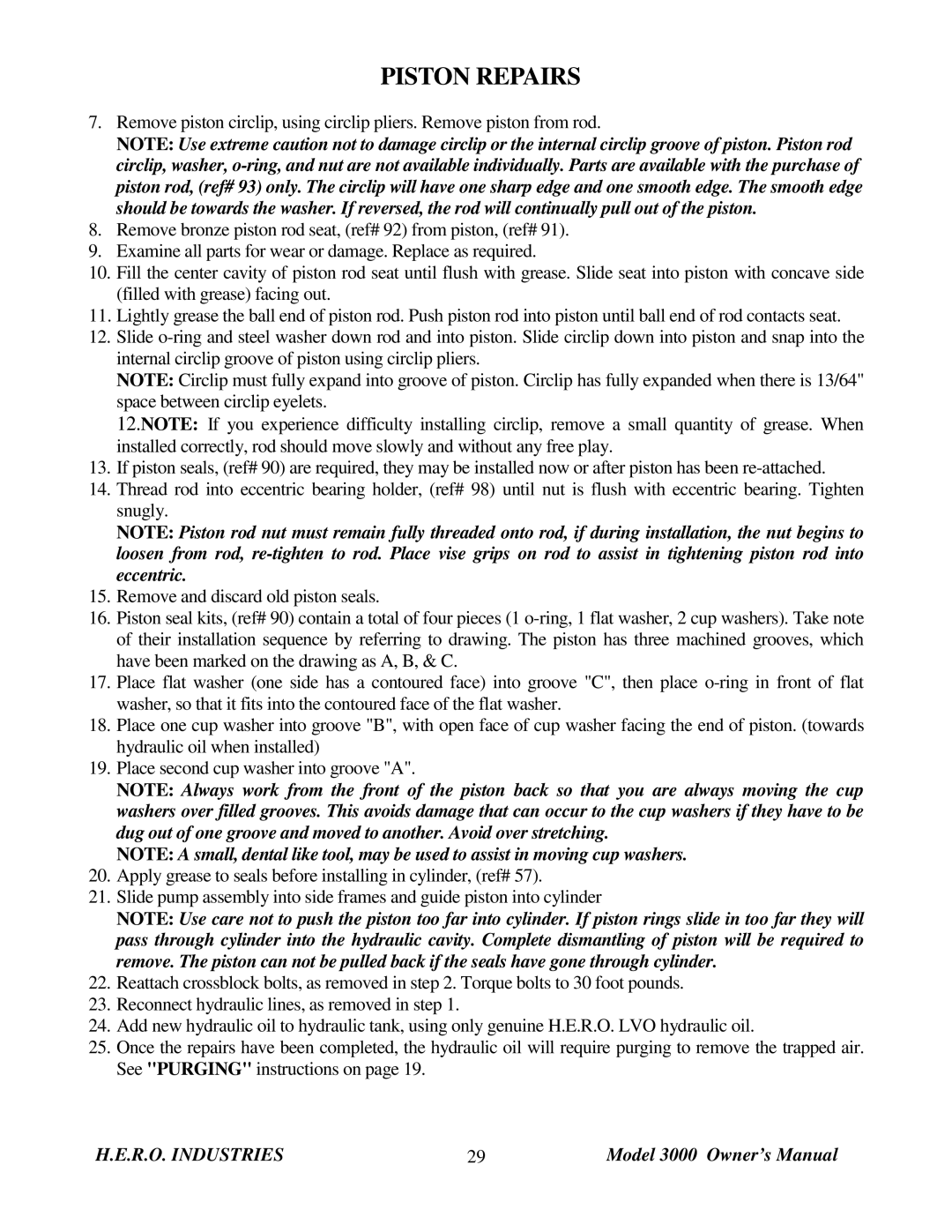PISTON REPAIRS
7.Remove piston circlip, using circlip pliers. Remove piston from rod.
NOTE: Use extreme caution not to damage circlip or the internal circlip groove of piston. Piston rod circlip, washer,
8.Remove bronze piston rod seat, (ref# 92) from piston, (ref# 91).
9.Examine all parts for wear or damage. Replace as required.
10.Fill the center cavity of piston rod seat until flush with grease. Slide seat into piston with concave side (filled with grease) facing out.
11.Lightly grease the ball end of piston rod. Push piston rod into piston until ball end of rod contacts seat.
12.Slide
NOTE: Circlip must fully expand into groove of piston. Circlip has fully expanded when there is 13/64" space between circlip eyelets.
12.NOTE: If you experience difficulty installing circlip, remove a small quantity of grease. When installed correctly, rod should move slowly and without any free play.
13.If piston seals, (ref# 90) are required, they may be installed now or after piston has been
14.Thread rod into eccentric bearing holder, (ref# 98) until nut is flush with eccentric bearing. Tighten snugly.
NOTE: Piston rod nut must remain fully threaded onto rod, if during installation, the nut begins to loosen from rod,
15.Remove and discard old piston seals.
16.Piston seal kits, (ref# 90) contain a total of four pieces (1
17.Place flat washer (one side has a contoured face) into groove "C", then place
18.Place one cup washer into groove "B", with open face of cup washer facing the end of piston. (towards hydraulic oil when installed)
19.Place second cup washer into groove "A".
NOTE: Always work from the front of the piston back so that you are always moving the cup washers over filled grooves. This avoids damage that can occur to the cup washers if they have to be dug out of one groove and moved to another. Avoid over stretching.
NOTE: A small, dental like tool, may be used to assist in moving cup washers.
20.Apply grease to seals before installing in cylinder, (ref# 57).
21.Slide pump assembly into side frames and guide piston into cylinder
NOTE: Use care not to push the piston too far into cylinder. If piston rings slide in too far they will pass through cylinder into the hydraulic cavity. Complete dismantling of piston will be required to remove. The piston can not be pulled back if the seals have gone through cylinder.
22.Reattach crossblock bolts, as removed in step 2. Torque bolts to 30 foot pounds.
23.Reconnect hydraulic lines, as removed in step 1.
24.Add new hydraulic oil to hydraulic tank, using only genuine H.E.R.O. LVO hydraulic oil.
25.Once the repairs have been completed, the hydraulic oil will require purging to remove the trapped air. See "PURGING" instructions on page 19.
H.E.R.O. INDUSTRIES | 29 | Model 3000 Owner’s Manual |
